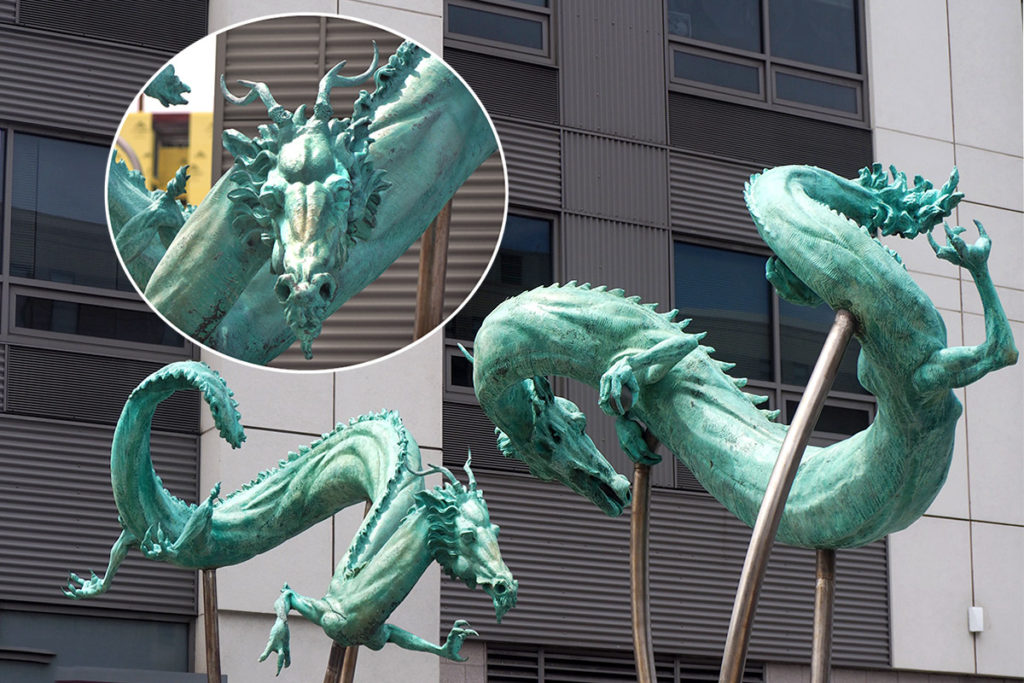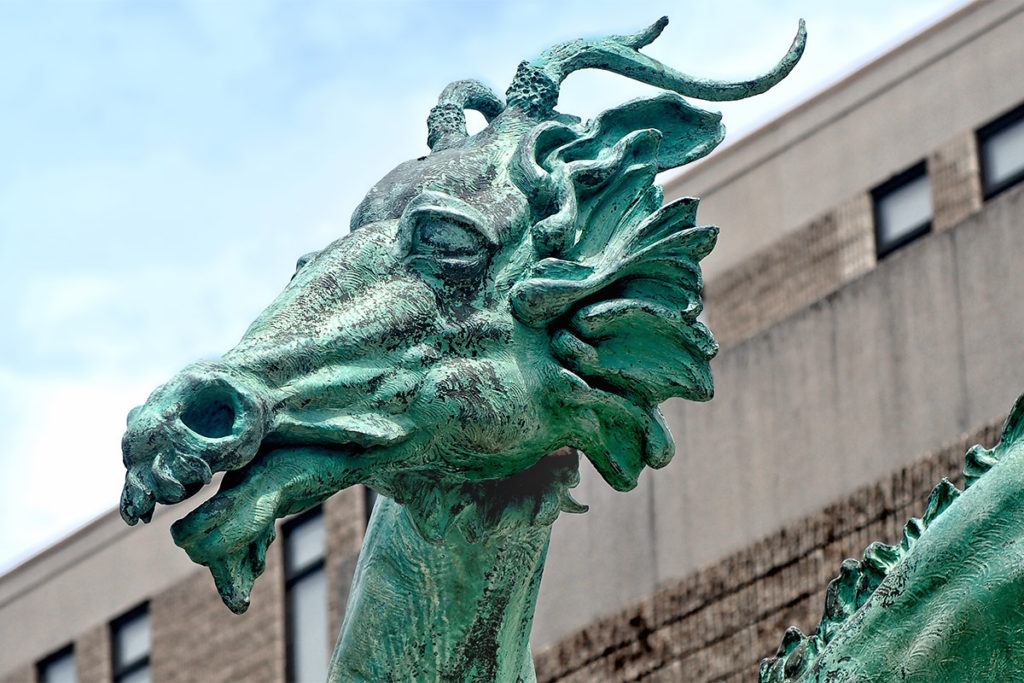

Despite their apparent serpentine ferocity, the dragons of ancient Chinese culture were benevolent water deities believed to control the rain and rivers that sustained life. Symbolically, dragon images projected a sense of prosperity, happiness, strength, and good luck — which is why for thousands of years, large paper dragon puppets on wooden poles have been danced through Chinese holiday parades.
It was at one of these Chinese New Year festivities in Philadelphia that artist Ward Elicker first conceived the idea of mounting huge bronze dragon sculptures high above the street on stainless steel poles commemorating the look of the paper monsters of traditional Chinese festivals. His creation of Chinatown’s Dragon Dance sculpture became one of the city’s most famous landmarks.
After graduating from the Pennsylvania Academy of Fine Arts in 1992, Elicker moved to Puerto Rico to run a bronze foundry. He later moved back to Philadelphia as the Parkway Corporation was building condominiums and a large parking lot at 9th and Arch Streets in Philadelphia’s Chinatown. Under the Philadelphia Redevelopment Authority’s One Percent Art law, Parkway had to spend $300,000 for some kind of public artwork at the project site.
In 2006, Elicker, who opened a large bronze foundry in Philadelphia, won the contract and came up with the idea for the four 16-foot long writhing dragons mounted on stainless steel poles. It took him two years and three tons of bronze to make the figures that have become a major city landmark and a welcoming gateway on the eastern edge of Chinatown.

